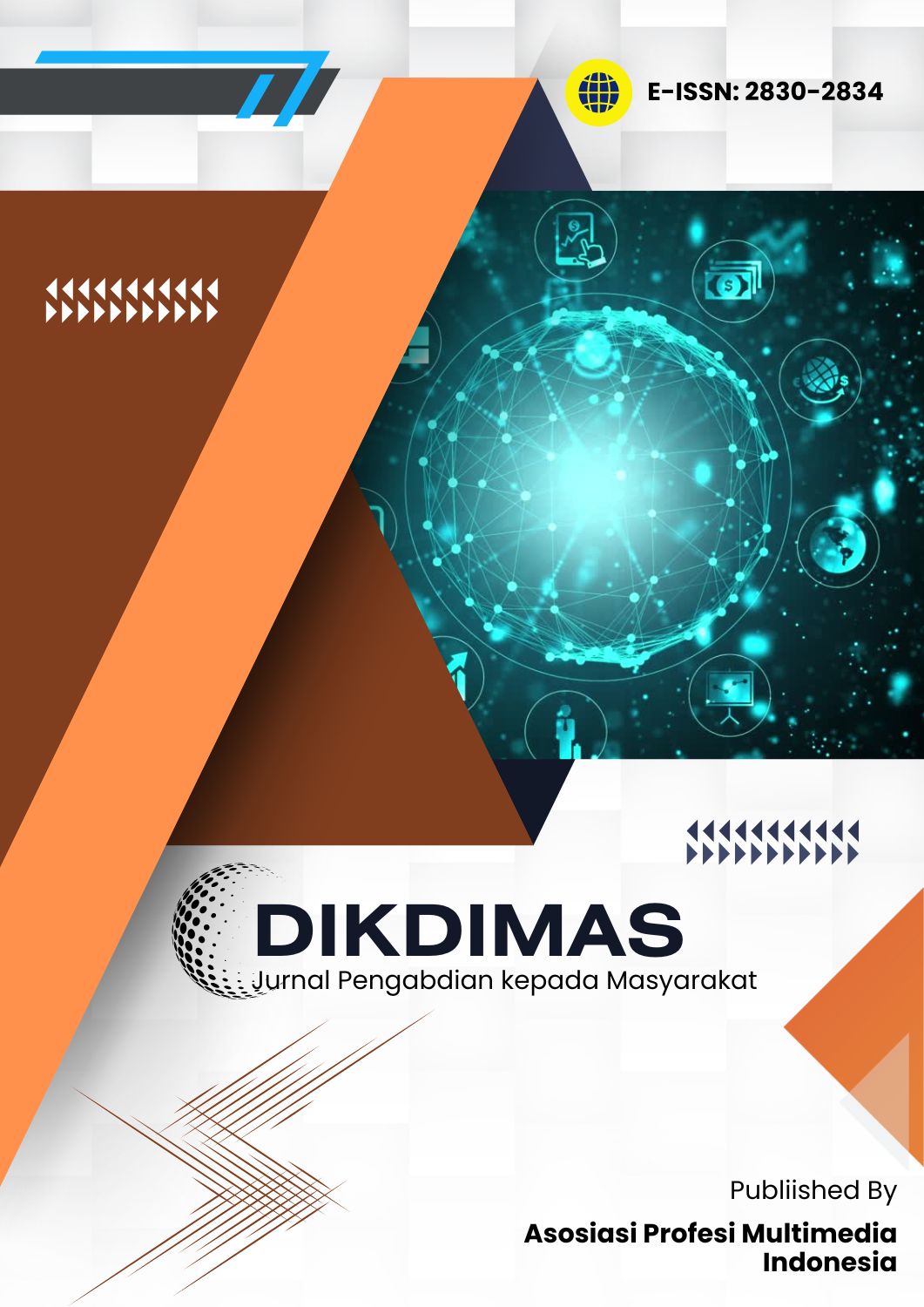Health Education About Clean and Healthy Lifestyle Behavior (PHBS) in the Transition Period of the Covid-19 Pandemic for Students
Main Article Content
Abstract
After the COVID-19 pandemic is ongoing up to 3 years, finally Indonesia started experience transition from pandemic going to endemic, following decreasing of case positive for COVID-19. During the transition, a number of rule start relaxed, however government recommend public for still carry out health protocol. Besides, in field education, all school carry out 100 % offline learning. The students have to stay alert from COVID-19 infection or another infection. So that, clean and healthy lifestyle (PHBS) is necessary carried out at school. There are several indicators of PHBS in schools that are necessary known by students. This health education aims to give education to 97 students in schools especially at SMK Negeri 2 Bengkulu City about importance implementing PHBS in the transition period of COVID-19 pandemic. This activity took place on Thursday , 22 September 2022. The method used form give education and discussion regarding PHBS in schools. We evaluated student’s understanding by pre-test and post-test about PHBS. Participant generally already have own knowledge regarding PHBS and more understand PHBS after participated in this activity.
Downloads
Article Details
Copyright (c) 2023 DIKDIMAS : Jurnal Pengabdian Kepada Masyarakat

This work is licensed under a Creative Commons Attribution-ShareAlike 4.0 International License.
- Authors retain copyright and acknowledge that the Journal of Multidisciplinary Applied Natural Science is the first publisher, licensed under a Creative Commons Attribution License.
- Authors are able to enter into separate, additional contractual arrangements for the non-exclusive distribution of the journal's published version of the work (e.g., post it to an institutional repository or publish it in a book), with an acknowledgment of its initial publication in this journal.
- Authors are permitted and encouraged to post their work online (e.g., in institutional repositories or on their website) prior to and during the submission process, as it can lead to productive exchanges and earlier and greater citation of published work.
References
ICtV, “The species Severe acute respiratory syndrome- related coronavirus: classifying 2019-nCoV and naming it SARS-CoV-2,” Nat Microbiol, vol. 5, no. March, 2020, doi: 10.1038/s41564-020-0695-z.
N. I. Fitriani, “Tinjauan Pustaka COVID-19: Virologi,Patogenesis, dan Manifestasi Klinis,” Medika Malahayati, vol. 4, 2020.
World Health Organization, “WHO Coronavirus (COVID-19) Dashboard | WHO Coronavirus (COVID-19) Dashboard With Vaccination Data,” Apr. 18, 2023. https://covid19.who.int/ (accessed Apr. 18, 2023).
A. C. Walls, Y. Park, M. A. Tortorici, A. Wall, A. T. Mcguire, and D. Veesler, “Structure , Function , and Antigenicity of the SARS- Structure , Function , and Antigenicity of the SARS-CoV-2 Spike Glycoprotein,” Cell, vol. 181, no. 2, pp. 281-292.e6, 2020, doi: 10.1016/j.cell.2020.02.058.
P. Zhou et al., “A pneumonia outbreak associated with a new coronavirus of probable bat origin,” Nature, vol. 579, no. March, 2020, doi: 10.1038/s41586-020-2012-7.
D. Rizqoh, Buku Ajar Virologi Jilid 3. Bogor: Guepedia, 2023.
X. Ma et al., “A Novel Coronavirus from Patients with Pneumonia in China, 2019,” pp. 727–733, 2020, doi: 10.1056/NEJMoa2001017.
D. Rizqoh et al., “Clinical manifestation of COVID-19 Co-infection case in Bengkulu City,” Diponegoro Medical Journal, vol. 11, no. 1, pp. 48–52, 2022, [Online]. Available: http://ejournal3.undip.ac.id/index.php/medico
D. Rizqoh, E. Nugrahaeni, M. Sundari, D. Triana, M. Sariyanti, and N. A. Massardi, “Trends in IgG Antibody Levels in Covid-19 Patients in Different Clinical Manifestations in Bengkulu City: Cohort Study,” AgriHealth: Journal of Agri-food, Nutrition and Public Health, vol. 3, no. 2, p. 79, Jun. 2022, doi: 10.20961/agrihealth.v3i2.61315.
E. Nugraheni, D. Rizqoh, A. Kurniati, L. Astuti, M. Sundari, and E. Febrianti, “CASE REPORT : LOW LEVEL IMMUNOGLOBULING (IGG) IN REINFECTION COVID-19 CASE,” Jurnal Kedokteran dan Kesehatan : Publikasi Ilmiah Fakultas Kedokteran Universitas Sriwijaya, vol. 9, no. 3, pp. 307–310, Sep. 2022, doi: 10.32539/jkk.v9i3.18828.
N. F. Azzahra, “Mengkaji Hambatan Jarak Jauh di Indonesia di Masa Pandemi COVID-19,” Center for Indonesia Policy Studies, no. 2, pp. 1–9, 2020.
P. Wahyono, H. Husamah, and A. S. Budi, “Guru profesional di masa pandemi COVID-19 : Review implementasi, tantangan dan solusi pembelajaran daring,” Jurnal Pendidikan Profesi Guru, vol. 1, no. 1, pp. 51–65, 2020, doi: https://doi.org/10.22219/jppg.v1i1.12462.
L. D. Herliandry, Nurhasanah, M. E. Suban, and H. Kuswanto, “Pembelajaran Pada Masa Pandemi Covid-19,” Jurnal Teknologi Pendidikan, vol. 22, no. 1, pp. 65–70, 2020.
K. P. C.-19 dan P. E. N. KPCPEN, “Pedoman Pembelajaran pada Semester Genap TA 2020-2021,” 2021. https://covid19.go.id/ (accessed Apr. 03, 2021).
D. Rizqoh, A. Aguspadita, M. G. Sinaga, N. Syadawani, and K. R. Haloho, “Edukasi Penerapan Protokol Kesehatan COVID-19 pada Pelaksanaan Pendidikan Sekolah Tatap Muka di SMKS 9 Muhammadiyah Kota Bengkulu,” Prosiding Webinar Nasional Penelitian dan Pengabdian Masyarakat Tahun 2021 dengan tema “Pandemi Sebagai Momentum Menuju Indonesia Tangguh, Indonesia Tumbuh,” pp. 404–410, 2021.
R. Kemenkes, “Indonesi Bersiap Menuju Endemi,” Kementerian Kesehatan Republik Indonesia, Sep. 30, 2022. https://www.kemkes.go.id/article/view/22100100001/indonesia-bersiap-menuju-endemi.html (accessed Apr. 07, 2023).
Badan Pusat Statistik Kota Bengkulu, Bengkulu Dalam Angka . Bengkulu: BPS Provinsi Bengkulu, 2017. Accessed: Apr. 07, 2023. [Online]. Available: https://drive.google.com/drive/folders/1PWRYwezNzwOM5HUBzNqyzQjPtvGKadqI
R. K. Asharo, A. Arifiyanto, F. Khaleyla, and C. T. Rahmadi, “Wawasan Perilaku Hidup Bersih dan Sehat (PHBS) di Masa Kenormalan Baru dalam Upaya Mencegah Penyebaran Covid-19 di Lingkungan Sekolah,” Mitra Mahajana: Jurnal Pengabdian Masyarakat, vol. 2, no. 2, pp. 184–192, Jun. 2021, doi: 10.37478/mahajana.v2i2.977.



 Debie Rizqoh
Debie Rizqoh
